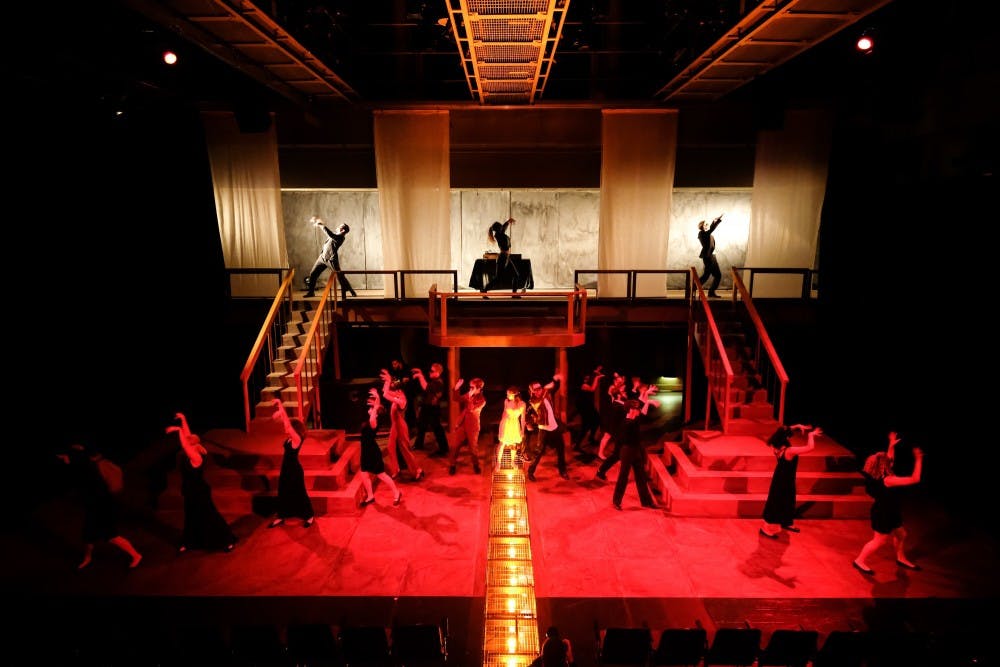Director Jenny Latimer and crew set out to render Shakespeare’s classic play with the roles of Romeo and Juliet inverted. No, Juliet wasn’t a boy, but instead the roles themselves were flipped.
Latimer’s reworking of Shakespeare appeared at once to be inventive. A full-cast dance scene filled the stage not once but twice, and not one but two fights were staged. This was contrasted by odd usage of the audio system and occasionally overdone lighting. The stage was repeatedly, cleverly passed between well-rounded characters.
Casting appeared to be Latimer’s greatest strength, alongside costuming. Romeo (Connor Nielsen) was found at times in canvas sneakers, blue jeans and a letterman jacket toned down a notch. Beside him, Juliet (Katia Carmichael) traded between a ballerina's dress, studded cut-off jeans and athleisure. Other characters wore prep-school uniforms and in the case of the Nurse and Peter, matching turtlenecks, black skinny jeans and high-heeled leather boots. Leather-jacketed Mercutio (John Rice), the high school bro of Juliet, had hair greased back and a cigarette in hand. A commanding Benvolio (Theo Holt) sported red hair and a purplish suit.
The cast felt to students in the audience like peers — and to the adults like children, nieces and nephews. This became highly effective as the more intellectual threads of the adaptation emerged.
The aim of this depiction was to challenge gender norms. The production achieved this so well it almost went unnoticed. Juliet was, if anything, more exciting as a strong female character, depicted as being amongst friends and brave in the face of conflict. Romeo was inversely more compelling as a boy entangled with the wishes of his parents, shown often alone. Emotionally mercurial, Romeo wore on his face the rapid shifts from amatory glee to anguish, rage and pain.
Considering that Latimer took a whole host of risks with this production, it seemed inevitable that some of them would fall short. The audience laughed through scenes with dancing, odd lighting and music, and fights that perhaps lasted too long. The line between emphasis and contrivance was tread upon with care, or perhaps by accident.
But despite falling flat early on, confrontation late in the play was redeemed by the face-off between father and son. In one of the most compelling moments of the play, a hyper-masculine Capulet (Michael Sparks) is oriented opposite his son, wife and servant as he orders Romeo to marry Paris (Sydney Pope). The conflict is stunning as it beckons sentiments from recent social controversies: the Weinstein effect and themes of masculine power chief among them.
The production is shown on a two-story set with staircases on either side. The split between above and below is cleverly utilized throughout as the Capulets are shown often from above. The Montagues are more subversive throughout, appearing often below or to the side.
There is no question that this remains Shakespeare’s play. However, Latimer gave a fierce inventive twist. The production leaned well on popular culture. Imagery of pill bottles, depression, violent overreaction and, most of all, self-harm all crystallized in the final stages. But the production mediated this current take and the gender-switched approach with a strong reverence for Shakespeare’s original.




